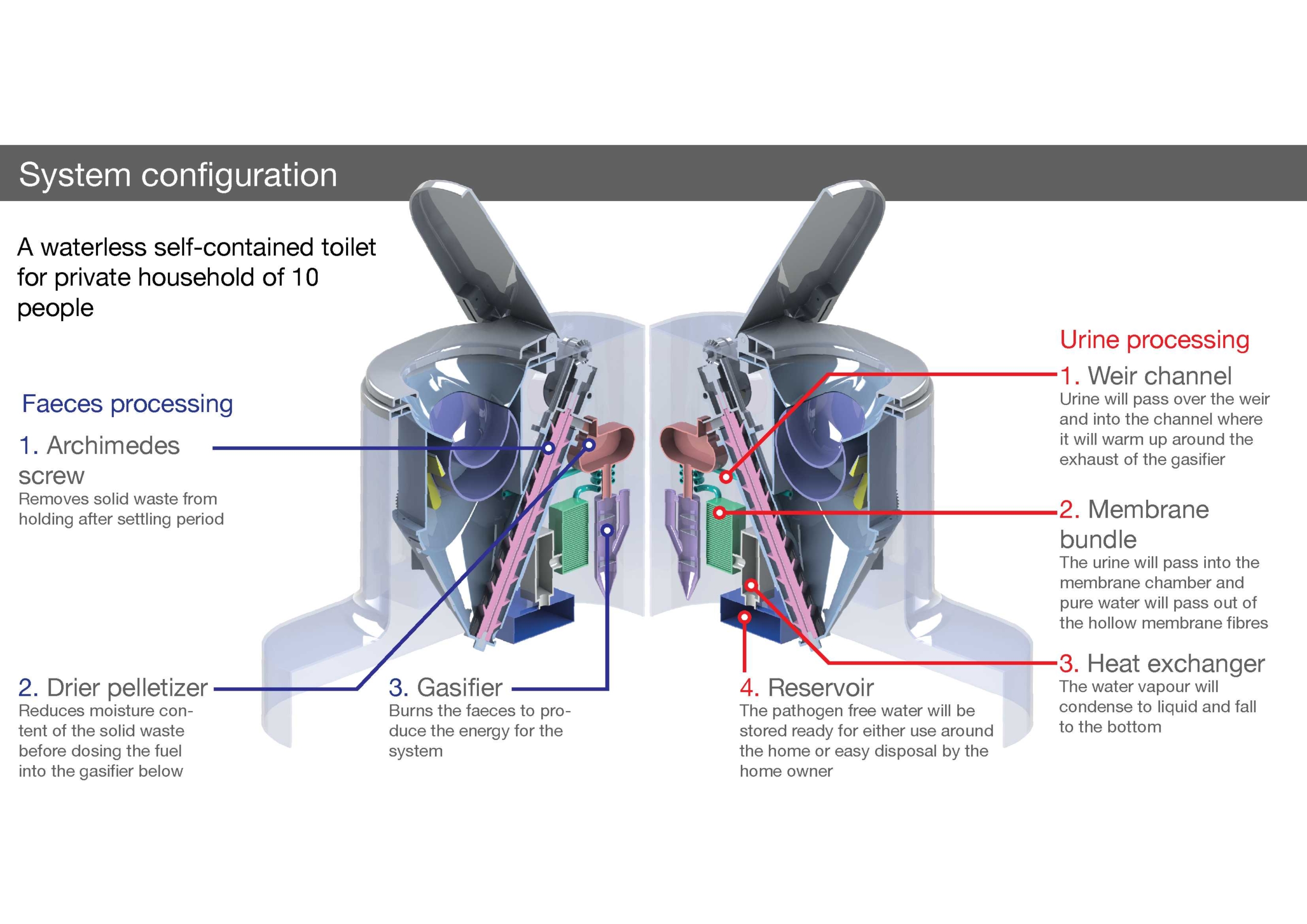Developing the Nano Membrane Toilet
29/06/2016

The Nano Membrane Toilet is a waterless, self-contained toilet for households of up to 10 people that has been in development since 2012. While the challenge we face – reinventing the toilet to provide access to safe and affordable sanitation – has not changed, much of the technology in the toilet itself has been refined and adjusted.
From the outside, early prototypes and our most recent prototypes look very similar. We’ve always believed that the Nano Membrane Toilet should have an aspirational design and that it should have a small enough footprint to fit in a low income household. However, on the inside, things have been changing.
One of the biggest shifts has been the end of the process for solid waste (faeces). Our initial design sent waste up an Archimedes screw to a misting chamber. As the waste fell from the top of the screw and landed in a collection chamber it was misted with paraffin wax. This could stop the pathogens escaping while letting the waste dry out.
However, working with colleagues in Energy at Cranfield, we have come up with a new solution. A gasifier can convert the solid waste to harmless ash. And, in doing so, it is able to produce the energy required by the other processes in the toilet (like the membrane processes which turn urine into safe water). We are also hoping that this process will even produce excess energy which could charge mobile phones or other low voltage electronics. This is clearly a better and less wasteful solution.
Elsewhere in the inner and outer workings of the toilet we have been experimenting and making adjustments to every aspects of the toilet. Members of the team have been refining the flush, for example, to make sure the bowl is clean every time. Other team members have been looking at how we can tweak the Archimedes screw to make sure it works effectively. We know that every single aspect has to be checked and trialled to ensure the toilet is reliable as well as easy to use.
To reflect some of the changes we’ve made in the design, we’ve produced a refreshed diagram reflecting the most recent changes (see image above).
In our labs, we’re still hard at work reinventing the toilet – but we’re looking forward to seeing what the future holds for this invention.
Find out more about the project here.
Categories & Tags:
Leave a comment on this post:
You might also like…
Preparing your work for Turnitin submission
Before submitting your work into Turnitin for similarity checking, if you have used referencing software then you may need to take some important steps first. Mendeley and Zotero integrate with MS Word by embedding field ...
The fast track to supercar engineering: My Cranfield journey
It’s been a dream come true to work on some of the world’s most prestigious supercars – the Aston Martin Valhalla, McLaren 750 & Artura, the GMA T.33. But every successful ...
Automotive Engineering: From student to hypercar innovation at Rimac
We sat down with recent graduate Thomas Perrin, to discuss how his year on the MSc in Automotive Engineering at Cranfield University propelled him from the lecture hall directly into the ...
What this year at Cranfield really meant to me
Every Cranfield journey is unique. In this alumni reflection, Zachea Scicluna shares what her year at Cranfield truly meant, from facing uncertainty to gaining hands-on experience in industry-backed projects. I’ve been reflecting (and delaying) ...
Preparing for assignments and exams?
Sorry! We know it seems a bit mean to mention the exams in January rather than looking forward to the break before it! However, we know many of you will be thinking about your forthcoming ...
Screening for FTSE 100 companies on Bloomberg
So you’re researching an index and need some data on its constituent companies? Bloomberg’s Equity Screening tool makes light work of this, not just for the FTSE, but for indices, exchanges and sectors worldwide. Type EQS ...






